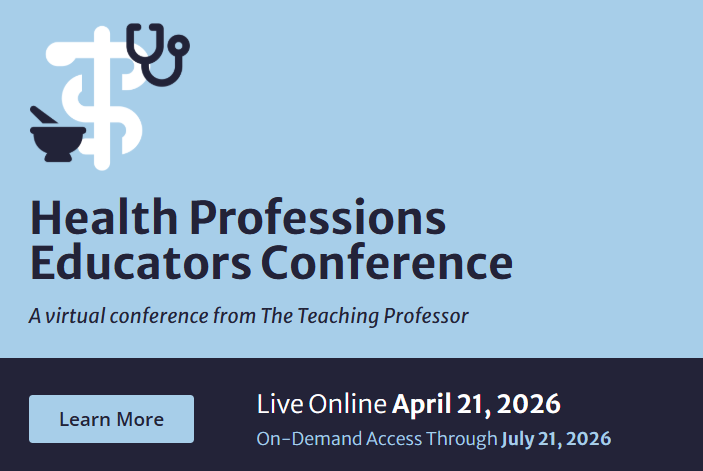How do we make learning messy and unpredictable for our students—and why? I posed this question to the members of the Teaching Professor group on LinkedIn in July, and a lively and insightful discussion immediately began. This article is based upon the insights shared in the discussion.
The phrase messy and unpredictable (particularly the word messy) proved to be quite provocative. To be sure, the wording of the question incited almost as much discussion as did the concept it articulates. The idea of an unprepared and disorganized instructor with no clear learning outcomes was a common misinterpretation. However, my use of messy and unpredictable refers to the learning experiences we offer our students and to the ways that we frame and offer those experiences.
First, messy suggests a classroom environment that motivates students to dig, to question, to take risks, to fail (and learn something from that failure that they may not have otherwise learned)—in short, to discover. Unpredictable seems to be a natural semantic companion to messy and further suggests discovery but also promotes adaptability. Together, these words articulate an idea of teaching and learning that renders the classroom experience an archaeological dig, so to speak, that puts the tools in the hands of the students. I embraced the misinterpretation of the phrasing, however, because the resulting comments served to exemplify a desired effect of the messy and unpredictable classroom: diverse interpretations discussed, negotiated, and reconciled. Isn’t this the kind of dynamic learning environment we should strive to create?
Discussion participant Jason Myrowitz effectively clarified my intended meaning for messy and unpredictable by rephrasing it as “strategic ambiguity.” This useful rephrasing not only conveys my intended meaning but also reveals the instructor and student positions in such a teaching landscape. It reveals the need for professors to be strategic and organized in their planning and offering of effective learning experiences, while creating situations that require critical and creative thinking and problem-solving. Those with a more spiritual approach to teaching may want to think of it as, what discussion participant Rex Veeder termed, “hectic zen.”
What follows are insights from a few of the discussion participants (quoted here with permission):
Why Should Learning Be Messy?
“I make the work messy because the world of work is messy (I teach in a job retraining program for adults). Bosses want you to solve your own problems. They do not give clear directions or rubrics for the finished product. Students need the critical thinking, problem solving, and Internet searching skills to find solutions to the real time messy moments of work.” (Bradley Gangnon, Takoda Institute at American Indian OIC)
“However passionately, smartly, perfectly, crystal-clearly we teach, there is messiness in the student’s mind in absorbing the ideas. We must adopt strange, sometimes a-student-specific approach to score a ‘hit’ with the ideas.” (Subramanian R., Sri Sathya Sai Institute of Higher Learning)
“Many respondents commented that intentionally introducing messiness increases the external validity of what students are learning in the course. I agree. There is another, perhaps equally important, reason for intentionally introducing some ambiguity and all the difficulties that attend it into our classrooms: these difficulties may actually increase students’ learning and retention of the material. There is a robust literature in cognitive psychology to support the notion that memory is the residue of thinking. Ambiguity, messiness, and disconfirmed expectations are all things that can get students thinking.” (David Porter, Berea College)
“I teach rhetoric, composition, and medical humanities. In all cases I find that making a mess and doing something unexpected or strange is necessary for progress with interpretation, problem solving, and real explorations of issues real for the students. . . . In the end, what appears to be messy is actually a process of engaging at a real and significant level for students and teachers alike.” (Rex Veeder, St. Cloud State University)
How Can We Make Learning More Unpredictable?
“I give assignments that allow a great deal of room for interpretation. For example, on a certain assignment, I tell students to come up with a creative way to deliver their information instead of making a PowerPoint presentation. . . . It requires the students to get out of their comfort zone and to realize that they won’t always be able to follow a rubric to arrive at a solution.” (Jason Myrowitz, Northern Arizona University)
“It seems that having just a skeleton of a lesson plan (and make sure the students are aware of this) is one approach. That way the climate of the class dictates the lecture and skill development.” (Conred Maddox, Honolulu Community College.)
Topic “interrogations,” as well as evaluation and synthesis tasks are other ways to get messy and unpredictable in the classroom.
The consensus is that creating ambiguity for students to work through is essential to their development of critical and creative thinking and problem-solving skills. Students may want knowledge presented to them in nicely wrapped packages, and we may feel like we are rightly attending to their needs when we offer this. However, the best gift we can give our students is the ability to question, to discover, and to learn to learn. Presenting students with messiness and unpredictability in a pedagogically-sound way can make that happen. Ultimately, what they (and we) need is “a little rattling of the cage.” (Howard Doughty, Seneca College of Applied Arts and Technology)
Melissa Hudler is the Director of the Quality Enhancement Plan and an instructor in the Department of English and Modern Languages at Lamar University.





